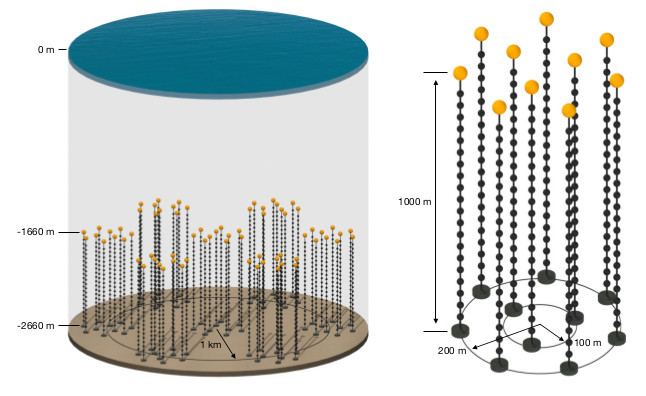How P-ONE will be designed
The Pacific Ocean Neutrino Explorer (P-ONE) as proposed by Prof. Resconi and her collaboration will be a system with several cubic kilometers of instrument volume optimized for high-energy astrophysical neutrinos. Instead of a uniforum infill area similar to IceCube, P-ONE will be a segmented, and therefore scalable, neutrino telescope. This is because the most favoured neutrino signal, the moun-track induced by a muon-neutrino, travels for several kilometers in both, water and ice. With a characteristic deep-ocean water optical attenuation length of 20 - 70 meter, a uniform infill area would require thousands of strings over a cubic-kilometer scale volume. Whereas a segmented sampling approach would retain sufficient information to reconstruct the direction and the energy of the track, significantly reducing the mooring lines required to cover a large volume.
The geometry is being opimized for horizontal neutrino induced tracks that propagate in water for several kilometers with a soft decrease of acceptance towards up and down going tracks. The horizontal tracks correspond to the gold channel for the search of the origin of high-energy neutrinos as they offer the best angular resolution obtainable in a neutrino telescope of the order of 0.1 degree.
The size of a segment is dictated by the the number of connectors that the infrastructure junction box can accomodate, which corrsponds to ten. The geometry produces an effective area of the same order of magnitude of IceCube above the TeV scale and will therefore contribute significantly to the search of high-energy neutrino sources.

